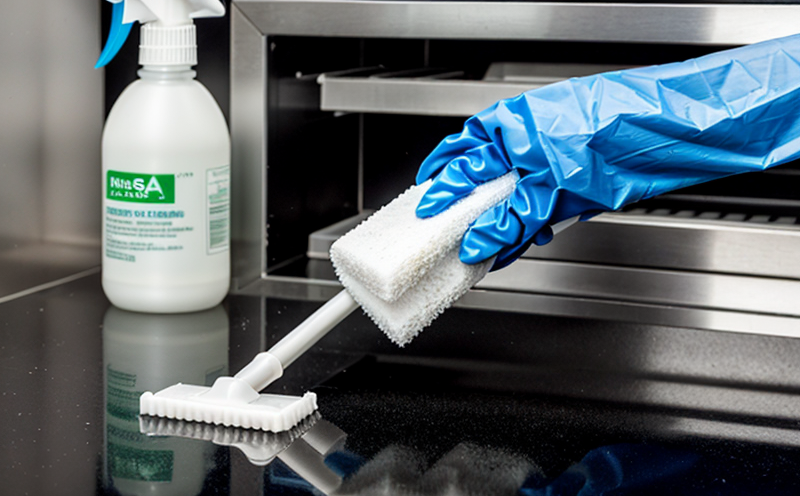ASTM E3058 Antiviral Testing of Hygiene Plastics
The ASTM E3058 standard provides a critical framework for evaluating the antiviral properties of hygiene plastics used in products such as hand sanitizers, medical gloves, and other surfaces. This testing is essential to ensure that these materials effectively reduce the transmission of pathogens, thereby enhancing public health safety.
The ASTM E3058 test measures the ability of a material's surface to inhibit viral replication on its surface when exposed to an infectious agent under specified conditions. The standard outlines a series of steps designed to simulate real-world exposure scenarios while maintaining laboratory control over variables such as temperature, humidity, and duration.
The testing process involves several key components: specimen preparation, inoculation with the test virus, incubation period, washing procedure, drying, and finally, examination for residual viral load. Specimens must be carefully prepared to ensure they represent the actual product or material being evaluated accurately. This includes considerations such as surface roughness, thickness, and any other relevant physical properties.
The selection of an appropriate test virus is critical; typically, a common human pathogen like SARS-CoV-2 (the causative agent of COVID-19) might be used. Following inoculation, the specimens are incubated for a specified time to allow viral attachment and replication. After this period, the samples undergo rigorous washing procedures intended to mimic actual usage conditions.
Post-washing, the specimens are dried carefully under controlled conditions before being examined using advanced analytical techniques such as quantitative reverse transcription polymerase chain reaction (qRT-PCR). This method quantifies the amount of viral genetic material remaining on the surface after testing. The goal is to determine if there has been a significant reduction in viable virus compared to control samples.
The results from these tests are then analyzed according to the criteria set forth by ASTM E3058, which defines what constitutes an effective antiviral performance. Compliance with this standard ensures that products meet regulatory requirements and provide the level of protection consumers expect when using hygiene plastics.
Understanding the importance of accurate testing procedures is crucial for manufacturers aiming to produce safe and effective hygiene products. By adhering strictly to ASTM E3058 standards, laboratories can ensure consistent quality across their testing processes, leading to more reliable data and greater confidence in product performance.
Scope and Methodology
The scope of the ASTM E3058 standard includes the evaluation of hygienic plastics for their ability to inhibit viral replication on surfaces. This involves assessing various types of plastic materials commonly used in disposable gloves, medical devices, and cleaning products that come into contact with human skin or other surfaces.
- Specimen preparation
- Inoculation with test virus
- Incubation period for viral attachment and replication
- Rigorous washing procedure to simulate real-world usage conditions
- Drying of specimens post-washing
- Examination using qRT-PCR to quantify residual viral load
The methodology outlined in ASTM E3058 ensures that all tests are conducted under standardized conditions, allowing for reproducibility and comparability between different laboratories. This standardization is vital for ensuring consistent results across various studies and applications.
Industry Applications
The ASTM E3058 antiviral testing of hygiene plastics finds extensive application in several sectors, including healthcare, consumer goods, and manufacturing. Here are some key areas where this testing plays a crucial role:
- Medical Devices: Ensures that gloves, face masks, and other personal protective equipment effectively reduce the spread of infectious diseases.
- Cleaning Products: Verifies that surfaces treated with antiviral coatings can prevent pathogen transmission in public spaces like hospitals, schools, and offices.
- Consumer Goods: Guarantees the safety and efficacy of items such as toothbrush holders, toys, and other household products that come into contact with human skin.
By adhering to ASTM E3058 standards, manufacturers can enhance their product offerings, providing consumers with greater peace of mind knowing they are using high-quality hygiene plastics designed to protect against viral infections.
Why Choose This Test
Choosing the ASTM E3058 antiviral testing for hygiene plastics offers numerous benefits that make it an indispensable tool in product development and quality assurance:
- Regulatory Compliance: Ensures adherence to international standards, making it easier to meet regulatory requirements.
- Consistency: Provides consistent results across different testing environments, enhancing reliability.
- Innovation: Encourages the development of more effective and safer products by identifying areas for improvement.
- Consumer Trust: Builds trust with consumers who rely on hygiene products to protect their health.
The comprehensive nature of ASTM E3058 testing ensures that manufacturers can deliver high-quality, safe, and reliable products. This not only meets but exceeds expectations set by regulatory bodies worldwide.





